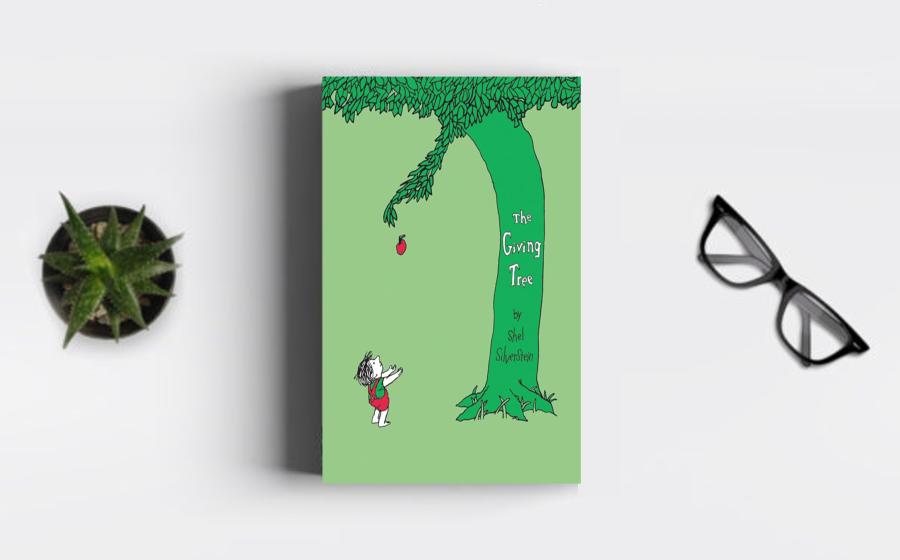"The Giving Tree," written and illustrated by Shel
Silverstein and first published in 1964, stands as a
timeless children's classic that has left an indelible
mark on readers of all ages. This poignant tale of a
selfless tree and a boy's lifelong journey has resonated
with generations, becoming a cherished story that
transcends cultural and temporal boundaries. As we delve
into the reasons behind its enduring appeal, it becomes
evident that "The Giving Tree" remains a powerful
literary masterpiece, celebrated for its universal
themes of love, sacrifice, and the profound impact of
selfless generosity.
At the heart of the book's
timelessness is the simple yet profound narrative that
unfolds between the tree and the boy. Silverstein's
minimalist storytelling and evocative illustrations
allow the emotions and themes of the story to resonate
deeply with readers. The central relationship between
the tree and the boy, which evolves over the course of
the boy's life, serves as a powerful metaphor for the
complexities of human relationships and the enduring
nature of selfless love.
The universal theme of
selfless love and generosity is at the core of "The
Giving Tree." The tree, portrayed as a nurturing and
benevolent figure, provides the boy with everything he
needs, from shade and apples to wood for building and a
stump for sitting. The tree's unwavering commitment to
the boy's well-being, expressed through its generous
offerings, embodies the timeless concept of
unconditional love. This theme transcends cultural and
generational boundaries, touching the hearts of readers
who recognize the profound beauty and rarity of such
selfless acts of giving.
The book's exploration
of the passage of time and the changing dynamics of
relationships contributes to its enduring appeal. As the
boy grows into a young man and later into an elderly
individual, the tree continues to provide for him,
adapting its offerings to meet his evolving needs. This
poignant portrayal of the lifecycle of
relationships - from youthful exuberance to the challenges
of adulthood and the reflective moments of old
age - resonates with readers at different stages of life.
The narrative prompts reflection on the inevitability of
change and the enduring thread of love that binds
individuals across the years.
Silverstein's
masterful use of language and imagery enhances the
emotional depth of the narrative. The spare and poetic
prose, combined with the expressive illustrations,
allows readers to connect with the emotions of the
characters on a visceral level. The juxtaposition of
simple language with profound themes creates a powerful
resonance, making the story accessible to young readers
while offering layers of meaning that unfold as readers
revisit the book at different stages of their lives.
The metaphorical nature of the tree and the boy
invites readers to interpret the story in various ways,
adding to its richness and complexity. Some readers may
see the tree as a representation of parental love, while
others may view it as a metaphor for nature's generosity
or even as a reflection of the selfless acts of giving
in human relationships. This open-ended quality allows
the book to adapt to the perspectives and experiences of
diverse readers, making it a versatile and enduring work
of literature.
The enduring popularity of "The
Giving Tree" is also attributed to its ability to spark
conversations about empathy, gratitude, and the ethical
dimensions of human behavior. The narrative prompts
readers to reflect on the reciprocity of relationships
and the responsibilities that come with receiving love
and generosity. It serves as a catalyst for discussions
about the value of giving without expecting anything in
return, fostering an understanding of the profound
impact of kindness and selflessness in the human
experience.
The emotional resonance of the book
is heightened by the universal theme of loss and the
poignant portrayal of the tree's sacrifice. As the boy
gradually takes everything the tree has to offer,
including its branches and trunk, the tree transforms
into a mere stump. This transformation becomes a
powerful symbol of the sacrifices made for the sake of
love and generosity. The emotional impact of the tree's
sacrifice, coupled with the boy's eventual realization
of the depth of the tree's love, elicits a range of
emotions from readers - ranging from sorrow to reflection
to a deep appreciation for the enduring power of
selfless acts.
The book's visual simplicity
contributes significantly to its timeless quality.
Silverstein's black-and-white illustrations,
characterized by clean lines and emotive expressions,
enhance the emotional impact of the story. The lack of
elaborate details allows readers to project their own
emotions onto the characters and the scenes, fostering a
sense of intimacy and personal connection with the
narrative. This visual simplicity, combined with the
evocative language, creates an enduring aesthetic that
has stood the test of time.
The book's
adaptability to various interpretations and its ability
to evoke empathy contribute to its continued relevance
in the context of evolving societal values. "The Giving
Tree" remains a poignant commentary on the nature of
relationships and the ethical considerations of giving
and receiving in a world that often emphasizes
individualism and materialism. Its themes resonate with
readers navigating the complexities of contemporary
society, making it a timeless work that continues to
inspire reflection on the enduring importance of
selfless acts of love and generosity.
The book's
impact has extended beyond the realm of literature into
popular culture and educational settings. Its themes
have been incorporated into discussions about character
education, emotional intelligence, and moral
development. The simplicity and accessibility of the
narrative make it a valuable resource for educators
seeking to instill values of empathy, gratitude, and
compassion in young minds. The enduring presence of "The
Giving Tree" in classrooms, libraries, and households
attests to its significance as a tool for fostering
important conversations about the human experience.
"The Giving Tree" by Shel Silverstein has earned its status as a timeless children's classic through its exploration of universal themes, emotional resonance, and capacity to inspire reflection on the enduring power of selfless love and generosity. The book's simple yet profound narrative, its ability to adapt to diverse interpretations, and its impact on readers of all ages contribute to its enduring appeal.






